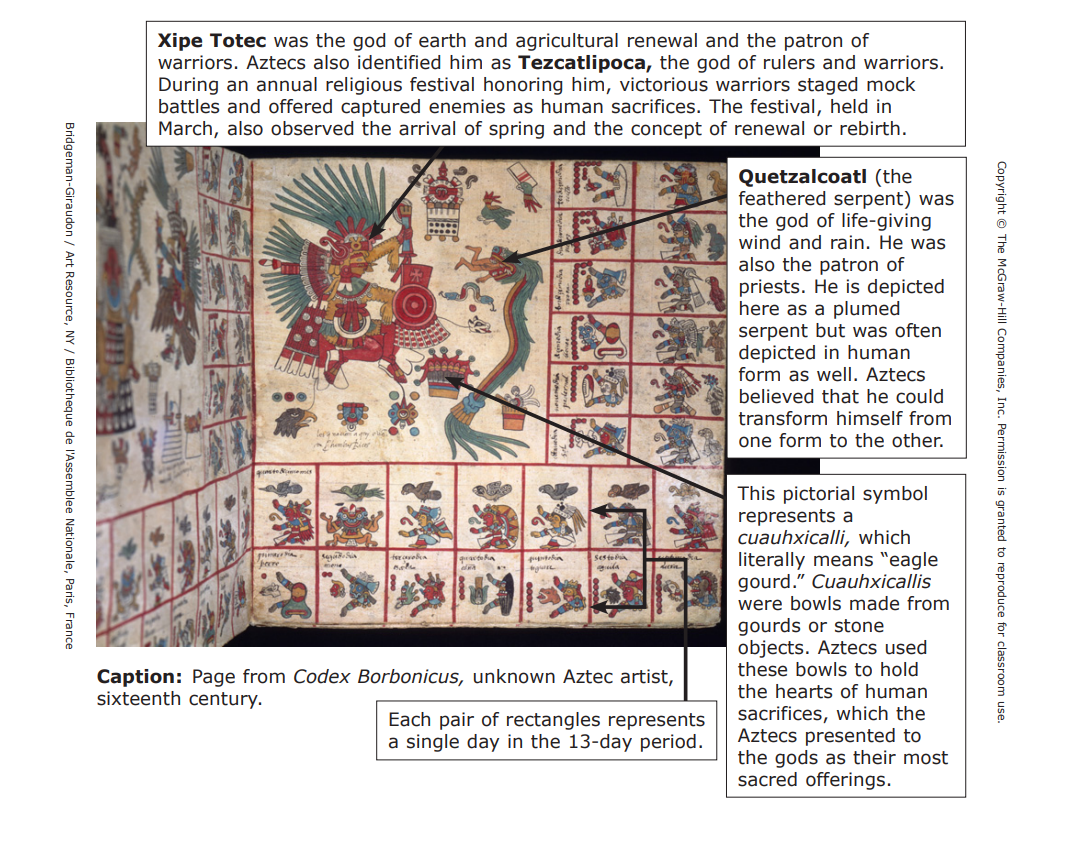Offer your own interpretation of what the images in the central portion of the page might depict. Use the callouts for guidance.
Offer your own interpretation of what the images in the central portion of the page might depict. Use the callouts for guidance.
Related questions
Question
Offer your own interpretation of what the images in the central portion of the page might depict. Use the callouts for guidance.

Transcribed Image Text:Bridgeman-Giraudon/ Art Resource, NY / Bibliotheque de l'Assemblee Nationale, Paris, France
Xipe Totec was the god of earth and agricultural renewal and the patron of
warriors. Aztecs also identified him as Tezcatlipoca, the god of rulers and warriors.
During an annual religious festival honoring him, victorious warriors staged mock
battles and offered captured enemies as human sacrifices. The festival, held in
March, also observed the arrival of spring and the concept of renewal or rebirth.
berre
t
ler ya
Chembur fint
Sega Sin
TEEM
terba
سه ای دی
quartoha
d
bywill
Sesto
gula
Caption: Page from Codex Borbonicus, unknown Aztec artist,
sixteenth century.
Each pair of rectangles represents
a single day in the 13-day period.
Quetzalcoatl (the
feathered serpent) was
the god of life-giving
wind and rain. He was
also the patron of
priests. He is depicted
here as a plumed
serpent but was often.
depicted in human
form as well. Aztecs
believed that he could
transform himself from
one form to the other.
This pictorial symbol
represents a
cuauhxicalli, which
literally means "eagle
gourd." Cuauhxicallis
were bowls made from
gourds or stone
objects. Aztecs used
these bowls to hold
the hearts of human
sacrifices, which the
Aztecs presented to
the gods as their most
sacred offerings.
Copyright © The McGraw-Hill Companies, Inc. Permission is granted to reproduce for classroom use.
Expert Solution
This question has been solved!
Explore an expertly crafted, step-by-step solution for a thorough understanding of key concepts.
This is a popular solution!
Trending now
This is a popular solution!
Step by step
Solved in 4 steps
